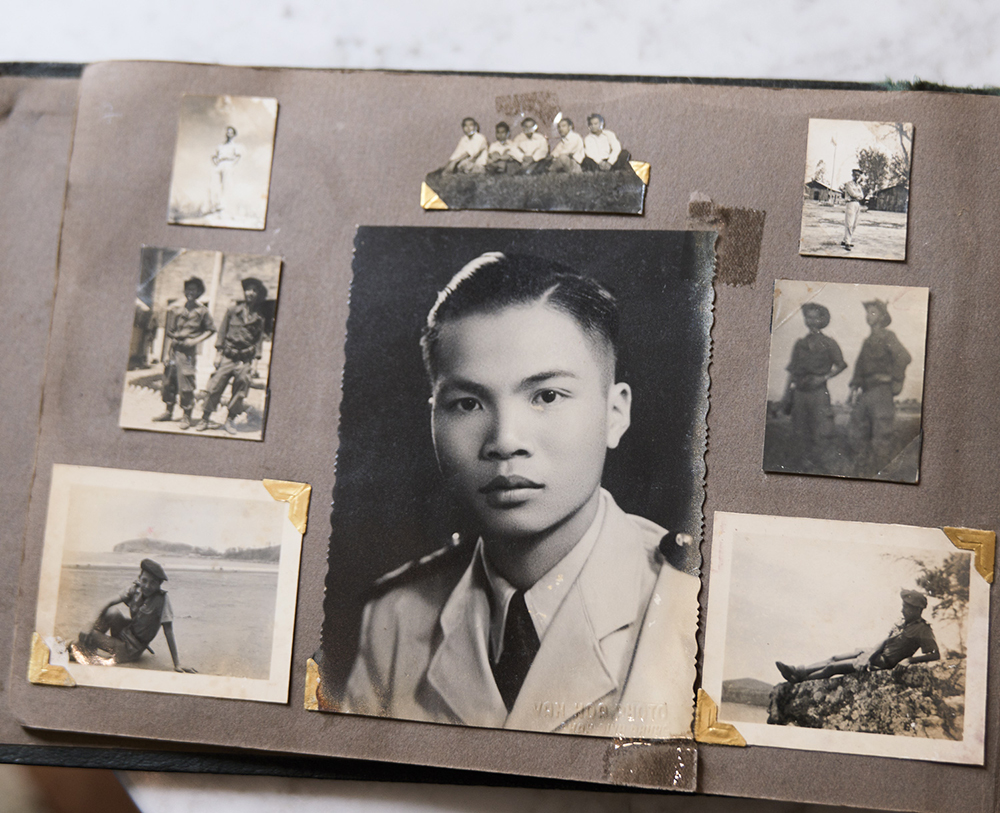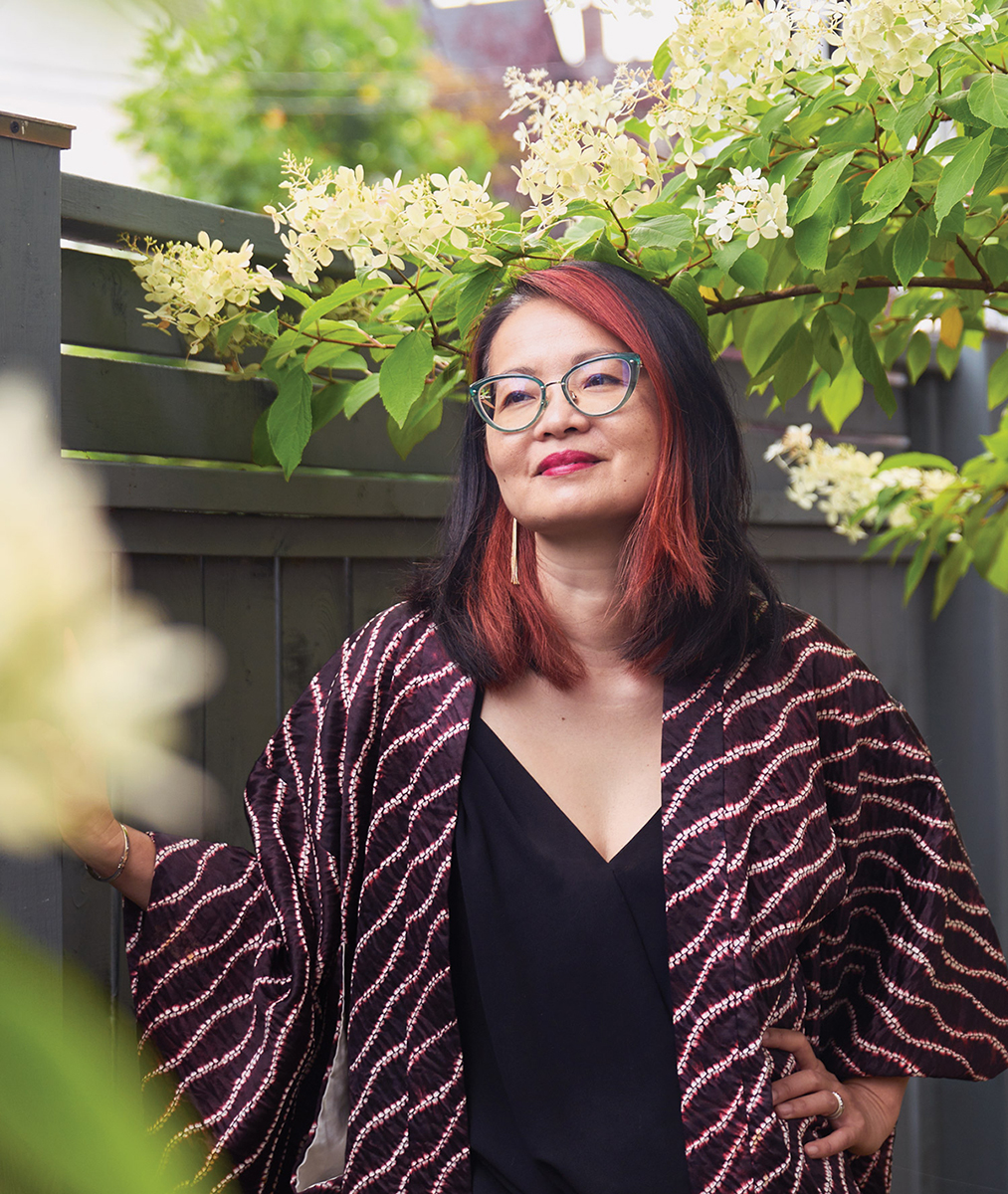When Thy Phu was a young Vietnamese-born newcomer to Toronto in the 1980s, she liked to watch kids’ shows on CBC. Without the luxury of today’s on-demand programming, she would often sit through the adult shows that came on in between, including a frequently aired documentary on the Vietnam War. Witnessing the shocking battleground footage over and over again, Phu was confused by how little this depiction looked like the Vietnam from her hazy childhood memories and family stories. “I knew,” she writes in her recent book Warring Visions: Photography and Vietnam, “as do so many Vietnamese, whether in Vietnam or overseas, that there was more to see.”
Warring Visions (2022) is the first scholarly book to explore works by Vietnamese photographers – both professional and amateur – during the war, filling a gap in the otherwise huge visual record generated by the Western press. “Growing up, the onslaught of images of destruction and carnage, and of poor, desperate refugees, seemed to cancel out or negate the images that I felt were part of my world,” says Phu, a professor in the department of arts, culture, and media at U of T Scarborough. The dominant photos and film footage framed Vietnam not as a country, but as a war, which didn’t reconcile with her memories of home as a place of swaying palm trees, family and ordinary life – shadowed as it was by the conflict that ended in 1975, not long before her birth.
There’s a beauty in people wanting to take these photos in the midst of their daily survival”
This disparity sparked countless questions in Phu, though she didn’t address them until she was well established in her academic career. Her first aspiration was to be a creative writer, which led her to literary studies. Yet she always felt drawn to the visual side of things, even focusing her doctoral dissertation on literary representations of photography. “I can’t really describe why I turned to photography,” she says. “I’m definitely not that great a photographer.”
After completing a postdoctoral fellowship at U of T, Phu taught courses on visual studies, cultural theory and Asian North American culture at Western University in London, Ontario, for more than a decade before joining U of T Scarborough in 2020. Her research has examined the intersections between media studies, diaspora and migration, among other subjects. For a long time, however, she avoided delving into any topics related to Vietnam, the war and her personal story.
“I thought I was too close to those things, and that academic writing had to be objective,” she says. “Eventually, it became clear to me that I’d been internalizing a judgment that’s often launched at more socially and politically engaged work about what counts as serious scholarship. There was this sense that it would be self-indulgent, that I’d be labelled as a person who does ‘me-search’ instead of research.” Phu eventually rejected the idea that research with any personal connection is less legitimate. “Being critically engaged with material that’s close to you is actually one of the hardest things to do,” she says. “It demands a lot of methodological rigour.”
Phu’s decision to write Warring Visions can be partly traced to one photo that captivated her from childhood. It was a wedding picture of her mother’s friend, and Phu would return to it again and again to scrutinize the bride’s beauty, her sparkling tiara and the shining Ford waiting to whisk her away. It was years until Phu noticed the sandbags in the background of the photo, taken near Saigon in 1968 after the start of the Tet Offensive – a series of coordinated attacks by North Vietnamese forces against South Vietnam. “It’s a family photo that’s also a war photo,” she says. “I had seen the photo so many times, but I’d never seen it fully. That lesson – that our picture of the war must expand to include the dailiness of life in the midst of war – was one of the inspirations for the book.”
The Vietnam War is often called the first “living room war,” meaning that Western broadcast and print images brought the latest developments to the world in near real-time. The extensive coverage, mostly by Americans, also produced several iconic images that became ingrained in the public imagination, such as the burning monk and the naked girl (who we now know is Kim Phúc) running from a napalm attack. Phu absorbed those photos too. “They stuck with me as I grew up,” she says. “But I kept thinking, should these be the only photos that come to mind when we think of the war? In many ways, I guess, the book is a plea to look elsewhere, to look beyond the iconic images to see the Vietnamese people who have been left out of the prevailing visual history.”
In effect, Warring Visions pushes against the boundaries of traditional notions of war photography. “I want this book to challenge readers to finally see Vietnamese people as more than just the monolithic imagery of the war,” she says. “Some of the images are ordinary. They’re ones that you could skip over. But there’s a beauty in people wanting to take these photos in the midst of their daily survival.” Phu also challenges her students at U of T Scarborough to reflect on these issues. “I teach students to think critically about how images inform the ways that they see war,” she says.
Warring Visions has two main parts: the first focuses on North Vietnamese photography during the war; the second on photography from the former South Vietnam and the Vietnamese diaspora. Each side, says Phu, used photos to communicate its ideological position and try to garner support domestically and internationally: these are the “warring visions” of the book’s title.
Phu drew on multiple sources for the wealth of images in the book, most of which have never been seen in the West before. She includes a broad variety of photographic types and styles, ranging from photojournalism and propaganda to studio portraits and family photos. Her research took years, mostly because of the obstacles she encountered in finding images from South Vietnam and the South Vietnamese diaspora.
After Saigon fell in 1975, the new Socialist Republic of Vietnam attempted to erase the visual evidence of the defeated South Vietnamese republic. “How do you look for the images created by people who have been written out of history?” says Phu. Confronting scant official archival images, she remembered the insight she’d gained from the wedding/war photo and began searching for South Vietnamese family photos.

Phu spent a couple of years digging through antique stores in Ho Chi Minh City, formerly Saigon, where shopkeepers sell vintage personal photos individually and in bulk. Many South Vietnamese families, she says, were eager to rid themselves of visual evidence of their wartime allegiance when they fled the country after the war, so they sold, discarded or destroyed their photos. “The challenge was for me to tell the story of loss around these photos while protecting the photographers’ and subjects’ desire to be lost,” she says, noting that she used pseudonyms and omitted identifying information for some photographers.
The countless personal photos she uncovered are rich sources of information about how Vietnamese people lived through the war, what they chose to document through photography and what they left behind as refugees.
Phu also included images from her own family. There’s a snapshot her mother kept of Phu and her brother at a refugee camp, for example, that Phu admits to finding unnerving because the “two urchins in rags” could be mistaken for mere victims. The photo emerged out of “my mother’s desire to have a record of our survival,” she writes.
Phu says she hopes other scholars will pick up where she’s left off in attempting to illuminate the wartime visual record created by Vietnamese people. “It’s a story that’s incomplete, but I’ve hopefully opened the door a tiny bit so that others may come through. Most of all, I hope that the book widens the picture of the subjects of war to more than just suffering victims whose stories need to be told for them.”
Recent Posts
People Worry That AI Will Replace Workers. But It Could Make Some More Productive
These scholars say artificial intelligence could help reduce income inequality
A Sentinel for Global Health
AI is promising a better – and faster – way to monitor the world for emerging medical threats
The Age of Deception
AI is generating a disinformation arms race. The window to stop it may be closing





